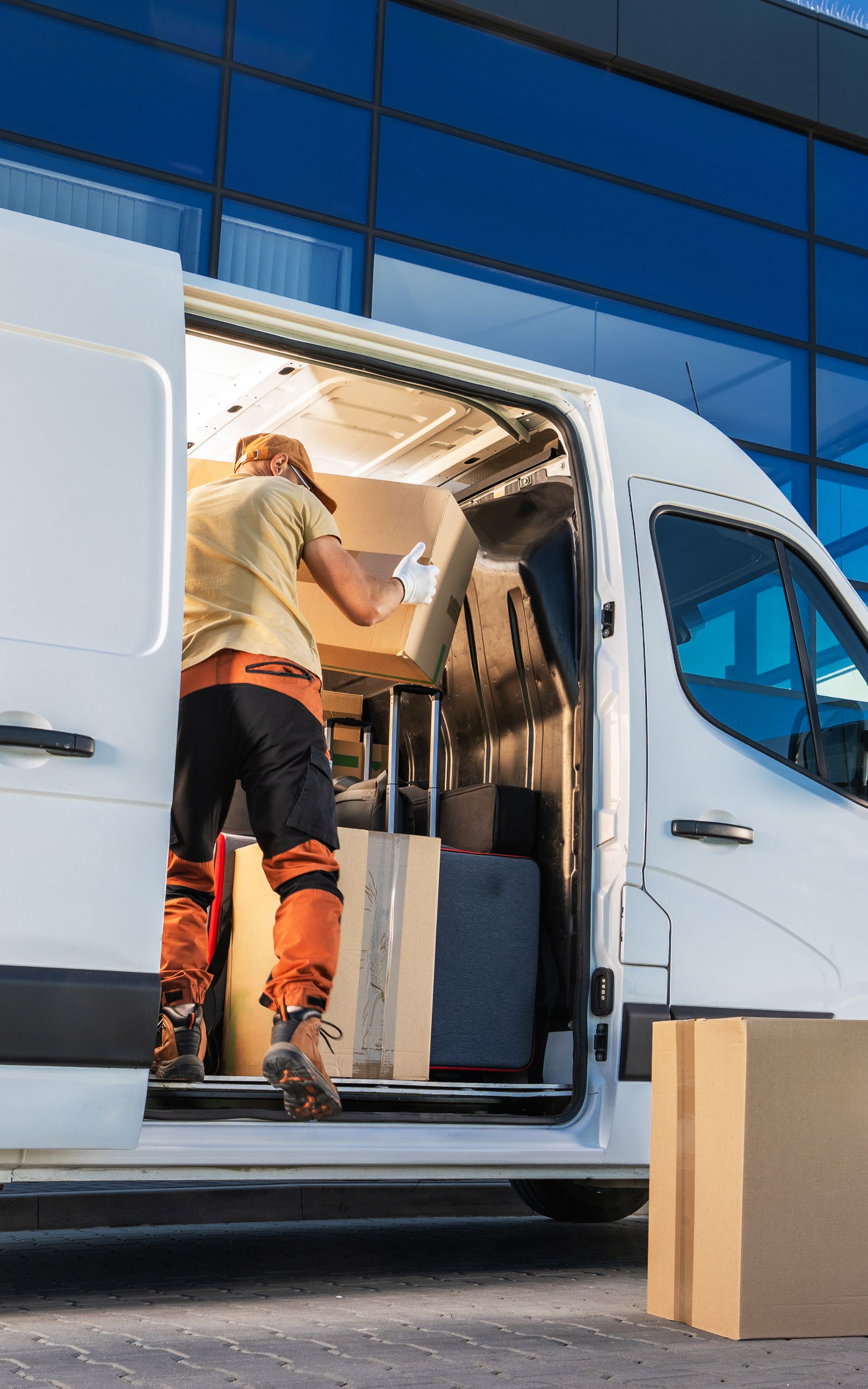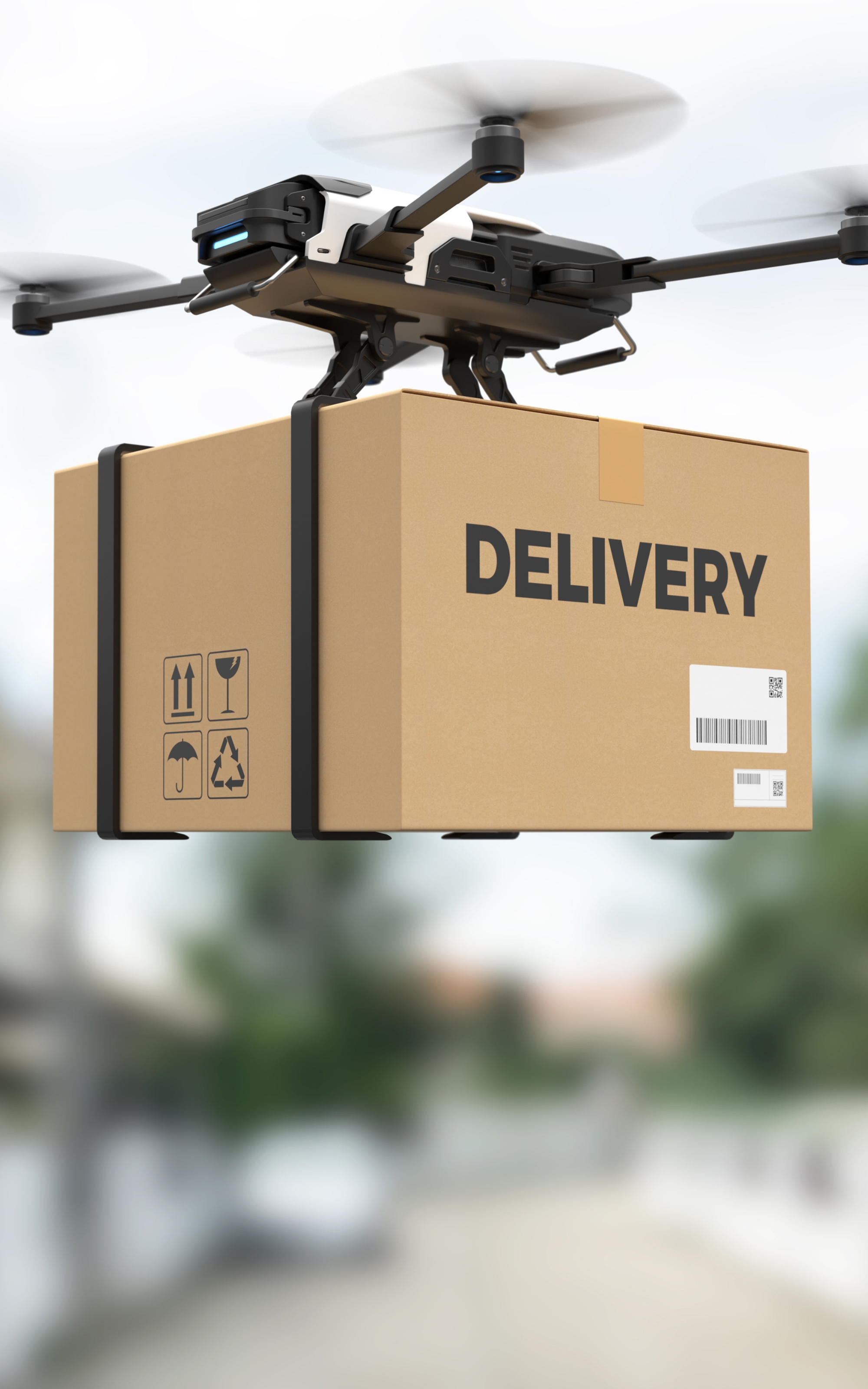Goods2load Optimizing Last-Mile Delivery Processes
Our logistics partners use advanced technology and efficient logistics practices to optimize last-mile delivery, reducing service time and operational costs while improving customer experience.
Reducing Service Time and Labor Costs
We employ advanced algorithms and automation to reduce service time and labor costs. By optimizing delivery routes and schedules, they ensure that drivers spend less time on the road and more time delivering packages.
-
Route Optimization: Advanced algorithms to find the shortest and fastest routes.
-
Automated Scheduling: Reduces manual intervention and errors.
-
Labor Efficiency: Minimizes the number of drivers needed for deliveries.
Improving Traceability and Customer Experience
We enhance customer experience by providing full visibility throughout the delivery process. Our logistics partners offer real-time tracking and automated notifications to keep customers informed and engaged.
-
Real-Time Tracking: Customers can monitor their package’s journey in real-time.
-
Automated Notifications: SMS and email alerts provide timely delivery status updates.
-
Customer Feedback: Post-delivery feedback options allow us to improve service quality continuously.
What are the benefits of Goods2load effective last-mile delivery?
Enhanced Customer Satisfaction
Our optimized last-mile delivery significantly improves customer satisfaction by ensuring timely deliveries and keeping customers informed at every stage.
-
On-Time Deliveries: Our optimized routes ensure packages arrive promptly.
-
Real-Time Updates: Customers receive continuous updates throughout the delivery process.
-
Feedback Mechanism: Allows us to gather insights and refine service quality.
Increased Operational Efficiency
By utilizing advanced technology and resource optimization, Goods2load logistics partners ensure efficient last-mile delivery processes, reducing both time and costs.
-
Cost Reduction: Lower labor and transportation expenses.
-
Higher Throughput: Manage more deliveries with fewer resources.
-
Resource Optimization: Efficient use of vehicles and personnel.
How does Goods2load last-mile delivery work?
Order Fulfillment Process
The Goods2load order fulfillment process connects clients with trusted logistics partners who handle everything from receiving the order to preparing it for delivery. Goods2load streamlines this process, ensuring smooth communication between clients and logistics providers.
-
Order Reception: Orders are received and processed through our automated system.
-
Picking and Packing: Our logistics partners manage the accurate picking and secure packaging of items.
-
Labeling: The logistics partners handle the labeling of orders for delivery, ensuring quick identification and efficient handling.
Delivery Execution and Confirmation
Once the order is ready, Goods2load logistics partners execute the delivery with precision. Optimized routes and real-time tracking ensure timely delivery, followed by confirmation sent directly to customers.
-
Route Planning: Optimized to ensure fast and cost-effective deliveries.
-
Delivery Execution: Our logistics partners deliver packages directly to customers.
-
Confirmation: Customers receive immediate confirmation of their delivery.
The Last-Mile Problem in Distribution Networks
Challenges Facing Last-Mile Delivery
Last-mile delivery faces several challenges that can impact efficiency and customer satisfaction. These include traffic congestion, delivery density, and customer availability.
-
Traffic Congestion: Delays caused by heavy traffic.
-
Delivery Density: Low delivery density increases costs.
-
Customer Availability: Missed deliveries due to customer unavailability.
Cost Implications of Last-Mile Logistics
The costs associated with last-mile logistics can be significant due to factors like fuel, labor, and vehicle maintenance. Goods2load works with logistics partners who use advanced strategies to help reduce these costs while maintaining high service quality.
-
Fuel Costs: Logistics partners optimize routes to reduce fuel consumption.
-
Labor Costs: Automation minimizes the need for excessive labor, helping partners reduce labor expenses.
-
Vehicle Maintenance: Our logistics partners' efficient use of vehicles reduces wear and tear, lowering maintenance costs.
How much does last-mile delivery cost?
Factors Influencing Last-Mile Expenses
Several factors influence the cost of last-mile delivery. These include the distance to be covered, the type of goods being delivered, and the delivery density.
-
Distance: Longer distances increase costs.
-
Type of Goods: Fragile or perishable goods require special handling.
-
Delivery Density: Higher density reduces per-delivery costs.
Strategies for Cost Reduction
Businesses can adopt various strategies to reduce last-mile delivery costs. These include route optimization, the use of technology, and efficient resource management.
-
Route Optimization: Reduces fuel consumption and travel time.
-
Technology Integration: Automates processes and reduces errors.
-
Resource Management: Efficient use of labor and vehicles.
Goods2load Advanced Last-Mile Delivery Methods
Goods2load connects clients with logistics partners who are at the forefront of innovation in last-mile delivery. These partners incorporate technologies like drones, robots, and micro-warehousing to improve efficiency and reduce costs.
Drones and Automation in Last-Mile Logistics
To enhance delivery speed and lower costs, Goods2load’s logistics partners are exploring the use of drones and autonomous robots, particularly in urban and high-density areas.
-
Drones: Ideal for short-distance deliveries, offering fast, efficient service.
-
Automation: Helps reduce the need for manual labor, cutting down on operational expenses.
Micro-Warehousing and Dark Stores
Goods2load connects clients with logistics partners by implementing micro-warehousing and dark stores to bring inventory closer to customers, thereby reducing delivery times and costs.
-
Micro-Warehousing: Small warehouses located close to customers.
-
Dark Stores: Retail outlets converted into fulfillment centers.
-
Strategic Location: Reduces delivery times and costs.
What is considered the last mile in delivery?
Goods2load’s last-mile delivery refers to the final stage in the logistics process, where goods are transported by logistics partners from a local distribution center directly to the customer’s door. This phase is critical for customer satisfaction and plays a major role in delivery efficiency.
-
Final Leg: Last step in the delivery process.
-
Direct to Customer: Goods are delivered directly to the customer.
-
Critical Stage: Impacts customer satisfaction and delivery efficiency.
Geographical and Operational Factors
Geographical and operational factors, such as customer location, traffic conditions, and delivery density, directly impact last-mile delivery. Goods2load's logistics partners use advanced technology to navigate these challenges and ensure optimal delivery performance.
-
Customer Location: Proximity to micro-warehouses helps logistics partners improve delivery times.
-
Traffic Conditions: Route optimization tools minimize delays caused by traffic.
-
Delivery Density: Higher delivery density lowers costs and improves efficiency.



